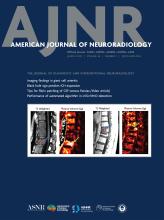This article requires a subscription to view the full text. If you have a subscription you may use the login form below to view the article. Access to this article can also be purchased.
Graphical Abstract
Abstract
BACKGROUND AND PURPOSE: DSC perfusion is an advanced imaging technique routinely used at 1.5T and 3T MRI. However, its utility is not well known in 7T MRI systems. We aim to evaluate if DSC perfusion is a valid and practicable tool at 7T MRI.
MATERIALS AND METHODS: A successful DSC perfusion was performed in 9 patients with an FDA-approved 7T MRI system (Siemens Terra with 1tx/32rx Nova head coil) in 2023. Half-dose contrast was administered by hand, followed by saline flush. Acquisition was initiated 45 seconds before contrast injection. Voxel size was 1.5 × 1.5 × 1.6 mm3. Perfusion maps were generated by using either SyngoVia or DynaSuite software. Parameters including relative CBV (rCBV), relative CBF (rCBF), relative MTT (rMTT), and relative TTP (rTTP) were measured in 5 anatomic locations bilaterally (precentral gyrus, middle frontal gyrus, corona radiata, thalamus, occipital cortex) and enhancing lesions if present. Normalized ratios of rCBV (nrCBV), rCBF (nrCBF), rMTT (nrMTT), and rTTP (nrTTP) were calculated and compared on boxplots. Two neuroradiologists reviewed each scan visually by using a 5-point Likert scale regarding imaging quality and artifacts. Qualitative and quantitative assessments were made on DSC perfusion in cases with enhanced target lesions.
RESULTS: Uploading the source images to imaging software took approximately 30 minutes to a few hours. In a few circumstances, large data caused software crashes. Map generation took approximately 10–15 minutes. Susceptibility artifacts varied from mild to moderate in cerebellum, temporal lobes, brainstem, and basal ganglia and none to minimal in the frontal, occipital, and parietal gyri. Map quality was excellent to reasonably good for all cases. The nrCBV, nrCBF, nrMTT, and nrTTP resulted in similar measurements for each anatomic area. Six target lesions were assessed in 2 different patients with well to excellent visualization on fused maps. Three lesions were characterized as tumor progression (1 biopsy-confirmed, 2 unconfirmed), 1 lesion as indeterminant (regressed in follow-up), and 2 lesions as radiation necrosis (1 stable, 1 regressed on follow-up).
CONCLUSIONS: Despite limitations with postprocessing issues, it is possible to reliably measure nrCBV, nrCBF, nrMTT, and nrTTP values with DSC perfusion by using a clinical 7T MRI system, and qualitatively, excellent or reasonably good fusion maps can be generated with high resolution.
ABBREVIATIONS:
- ASFNR
- American Society of Functional Neuroradiology
- GBCA
- gadolinium-based contrast agent
- GRE
- gradient echo
- NAWM
- normal-appearing white matter
- nrCBF
- normalized ratio of relative CBF
- nrCBV
- normalized ratio of relative CBV
- nrMTT
- normalized ratio of relative MTT
- nrTTP
- normalized ratio of relative TTP
- rCBF
- relative CBF
- rCBV
- relative CBV
- rMTT
- relative MTT
- rTTP
- relative TTP
- © 2025 by American Journal of Neuroradiology













